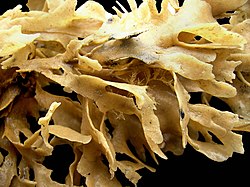| Flustridae | |
|---|---|
 | |
| Colony of Flustra foliacea | |
| Scientific classification | |
| Kingdom: | Animalia |
| Phylum: | Bryozoa |
| Class: | Gymnolaemata |
| Order: | Cheilostomatida |
| Suborder: | Flustrina |
| Superfamily: | Flustroidea Fleming, 1828 |
| Family: | Flustridae Fleming, 1828 |
| Synonyms | |
Hincksinidae Canu & Bassler, 1925 | |
Flustridae is a family of bryozoans in the suborder Flustrina. [1]